The Apple iPad Air 2 Review
by Joshua Ho on November 7, 2014 9:30 AM EST- Posted in
- Tablets
- Apple
- Mobile
- iOS
- ipad Air 2
GPU Performance
On the GPU side of things the iPad Air 2 seems to have a GX6650, which should provide a healthy boost to GPU performance when compared to the GX6450 in the A8. Apple has placed a strong emphasis on gaming for their iPad line, so there are some obvious comparisons to be made between NVIDIA's Tegra K1 and the A8X as well. To test this, we use a suite of benchmarks that can give a good idea of real world gaming performance.
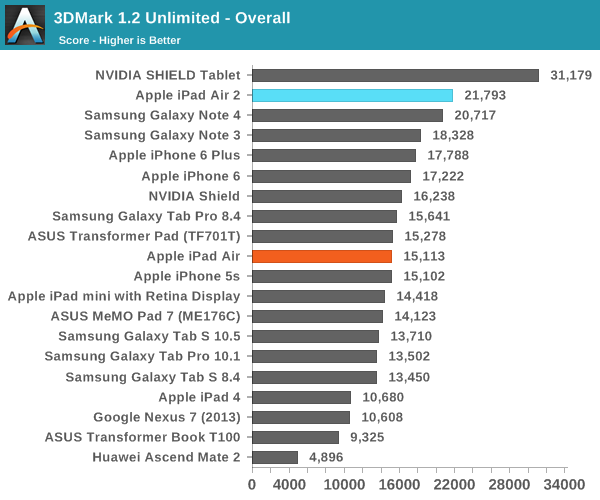
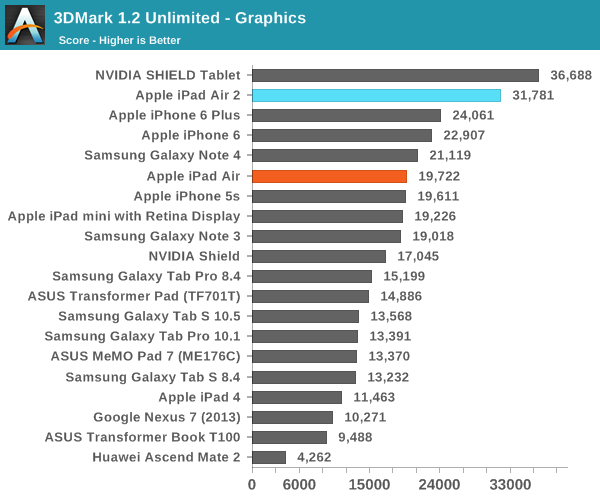
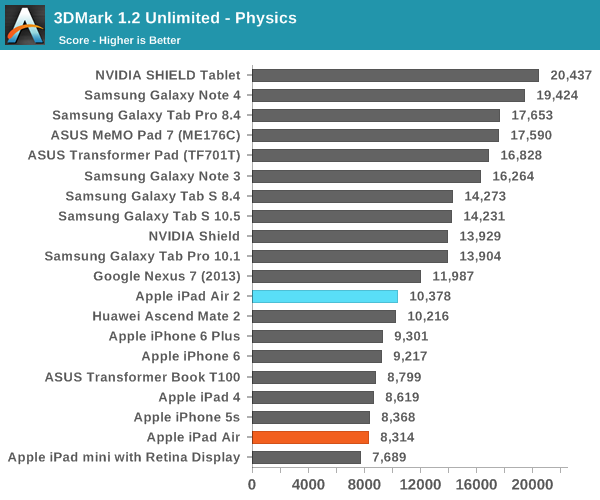
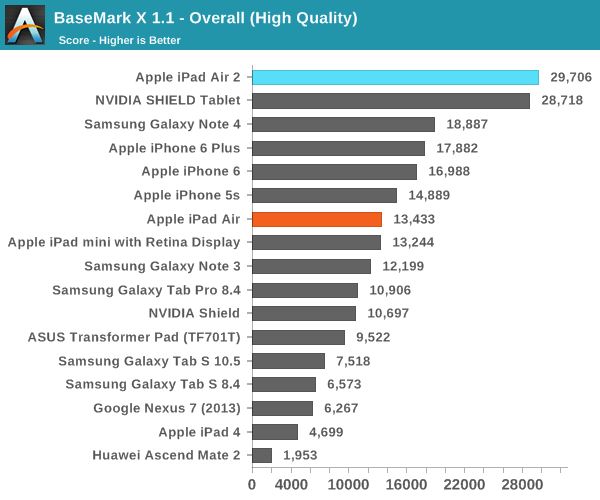
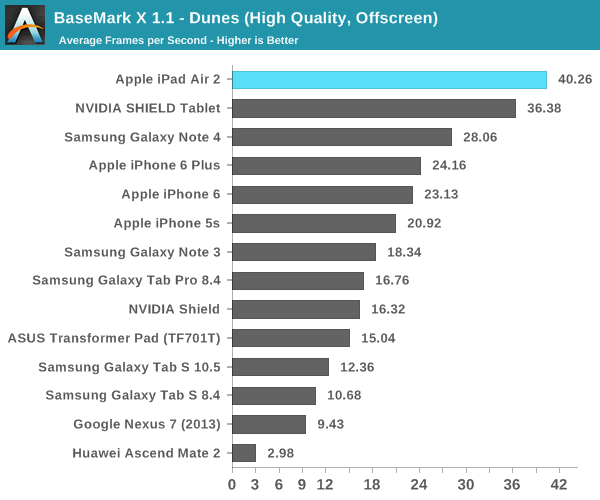
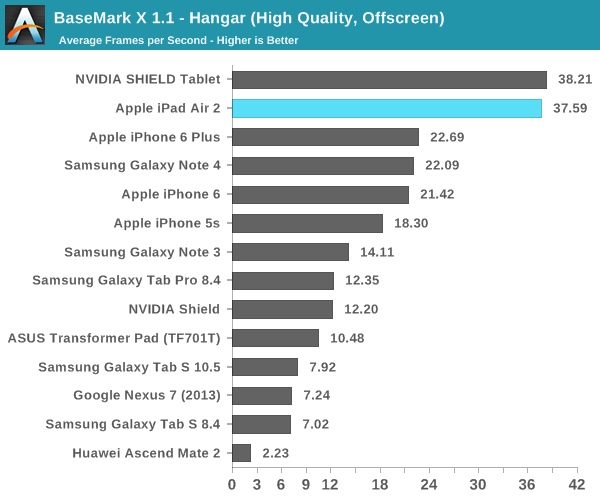
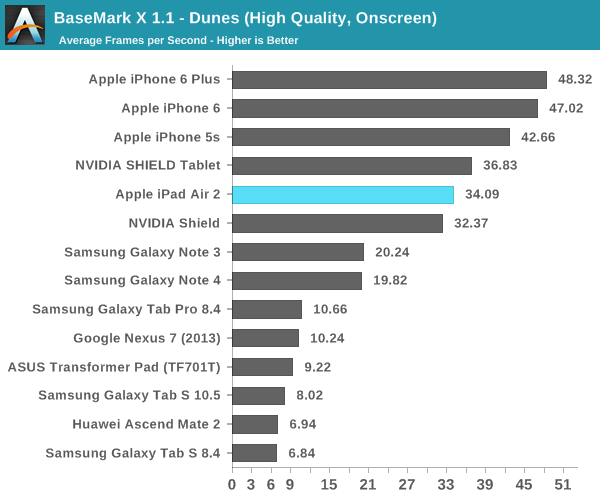

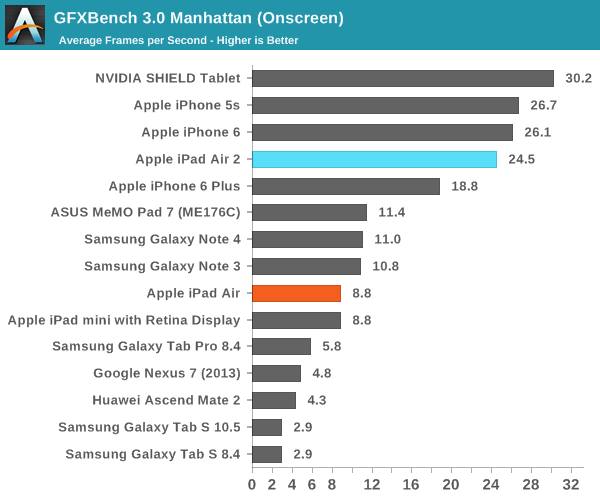

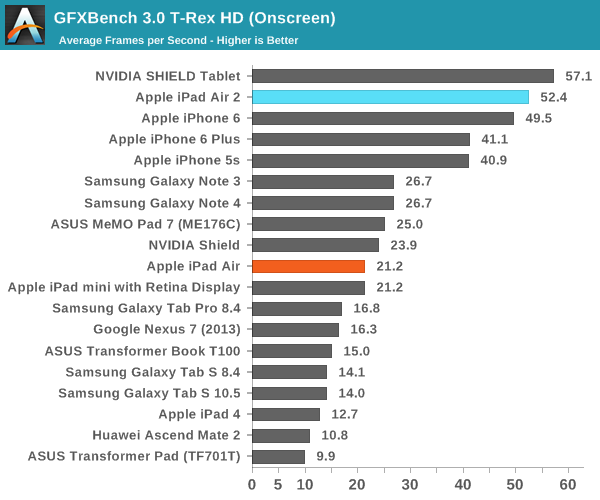

In practice, while we see that the A8X's GPU is extremely close to Nvidia's single Kepler SMX across the board, with the sole exception of 3DMark which seems to be due to the dependencies present in the physics test that dramatically lower the overall score. NVIDIA's Tegra K1 seemed incredible for its GPU performance earlier this year, so it's just as surprising to see Apple successfully rival NVIDIA in this area. Of course, GPU performance is a function of both peak performance and sustained performance, so we'll have to look at the GFXBench battery rundown test to get the full picture here. If Apple can deliver far superior performance and battery life in such a situation, it's pretty clear that the jump to 20nm will be critical to pushing the limits on what's possible in a mobile device.
NAND Performance
As we've seen before on some tablets, poor storage performance can cause major issues with the overall experience as I/O pauses can far exceed just a few frame drops that one might expect from cases of UI lag induced by insufficient performance elsewhere. In order to attempt to quantify this performance we use a custom utility developed by Eric Patno. While such testing is far from a complete look at performance, this can give a rough idea of what to expect.
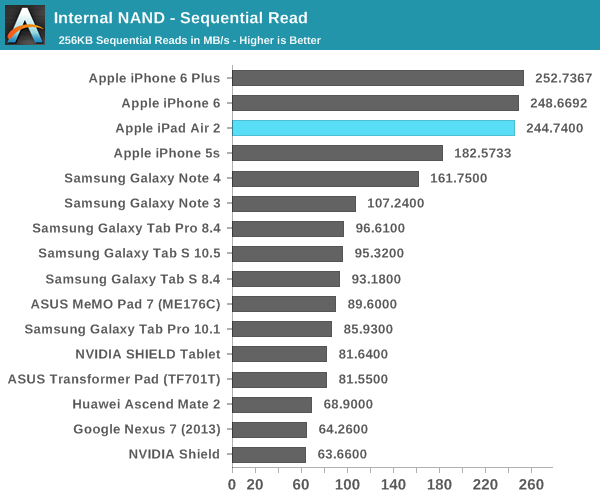
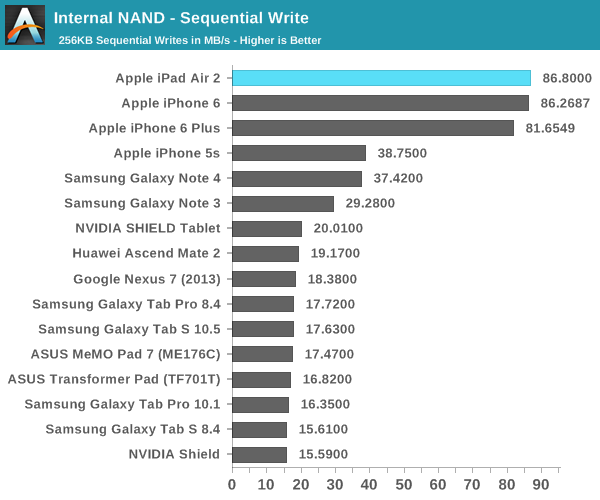
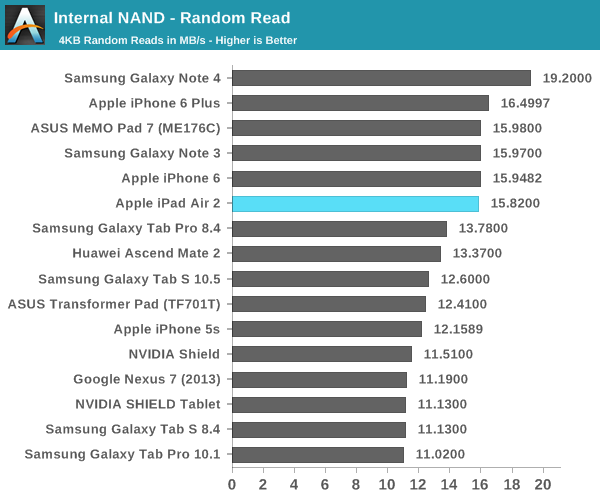

Overall, it seems that Apple does quite well on the storage tests. It seems that the iPad Air 2 shares its storage solution with the iPhone 6. While I don't have an iPad Air on hand for testing, it should match quite closely to the iPhone 5s. This represents a generally high-quality NAND solution, but as mentioned before random I/O could stand to improve a bit. Compared to most of the lower-cost Android tablets it's definitely as good as it gets though.










226 Comments
View All Comments
kron123456789 - Friday, November 7, 2014 - link
"looks like K1 doesn't support FP16." — well, it really doesn't. K1 has no FP16 ALUs. But it does have a few FP64 ALUs. It's Kepler after all.JoshHo - Friday, November 7, 2014 - link
We have had an ongoing internal debate over how to best represent performance in thermally-limited scenarios. However, the goal of our specific test is to try and show the lower bound for performance although we will include the full FPS graph from here on out.It's certain that the CPU is fully capable of throttling on the iPad Air 2 much more easily, but as far as we can tell GPU-bound workloads are unlikely to throttle on the iPad Air 2 and performs better than Tegra K1 in this area.
lucam - Friday, November 7, 2014 - link
See the Xiami MIpad..and then comment please..tralalalalalala40 - Friday, November 7, 2014 - link
TouchID is for enterprise. No more 10 digit pins every 5 min!KPOM - Friday, November 7, 2014 - link
True. I acquired the Air 2 primarily for this reason. The added performance and updated design are gravy.Georges003 - Friday, November 7, 2014 - link
I noticed the following on all current and previous generations iPad air and iPad mini.On a white screen (for example blank document/note), pushing with one or more finger(s) on the back of the ipad or on the screen itself, displays a dark shadow in the area being pushed.
I have not observed this effect on the iPhone 6, my iPhone 4s and iPad 4.
Did you or anybody else notice this as well?
If yes, how do you feel about it since this without any doubt the result of design compromises for making the device thin and light?
blackcrayon - Friday, November 7, 2014 - link
I can notice this only if i strongly and deliberately press on the device. But I haven't figured out why anyone would or could do that in normal use by mistake. Why would anyone grip the device that hard?Georges003 - Friday, November 7, 2014 - link
I’ve tried to reproduce this effect on a least 8 devices in 2 different stores and it was present on all of them. On some devices you really didn't have to push very hard and on some the only thing you had to do is to pick it up.Typical applications were one would push “harder” on the screen: Ipad used as a music instrument, games, artists using ipad with pressure-sensitive pens, …The question is not why one would press this hard but why do we accept this while iphones, older Ipads and most, but not all, premium tablets of the competition clearly show that touch screen devices can be designed without showing such behaviour.
blackcrayon - Friday, November 7, 2014 - link
Is the Nexus 9 one of your premium tablets of the competition? I hope not...I also doubt you will generate much pressure on the *back* of the device by pushing harder on the screen. Isn't that on the other side? :) I notice you've "tried" to reproduce this effect. I still don't think this is something that's going to happen in normal use. I bet you'll be outraged over the fact you can break one by putting it on your knee and pressing both sides.
Georges003 - Friday, November 7, 2014 - link
The Nexus 9 happens to be a device with a similar behaviour as the iPad Air 1/2 … great OS but, in my opinion, not a "premium" device.Sushisamurai (link) also commented on this review. He mentions “ … with the volume turned up, the iPad would reverberate/vibrate due to the audio output …” I have also noticed this annoying behaviour and wouldn’t be surprised that this is another consequence of making the iPad Air 2 a little too thin and light.